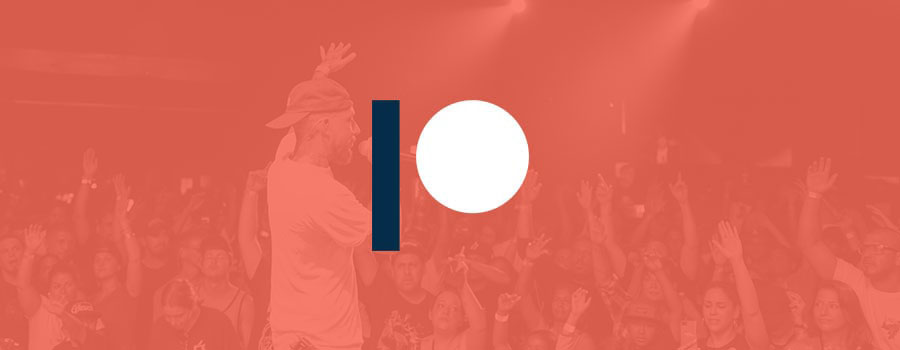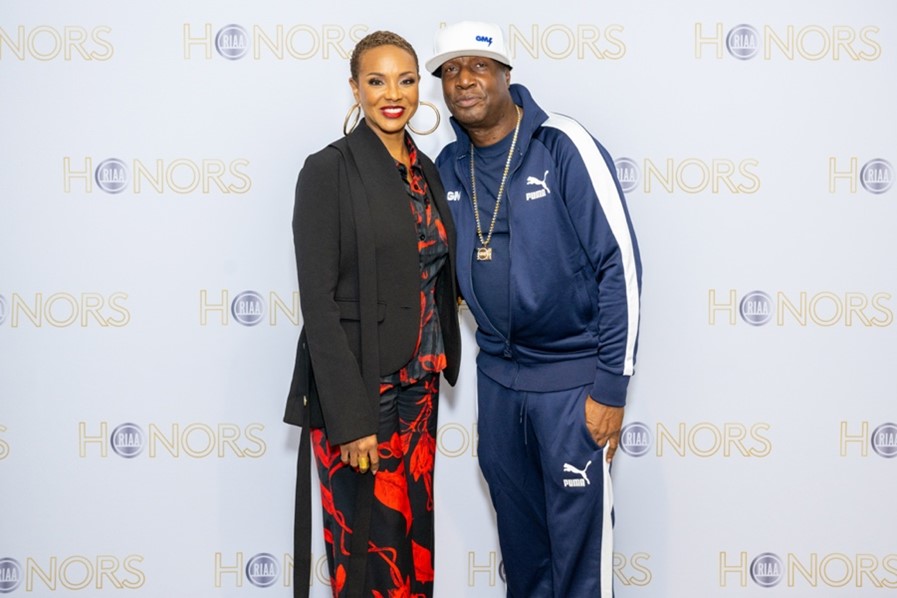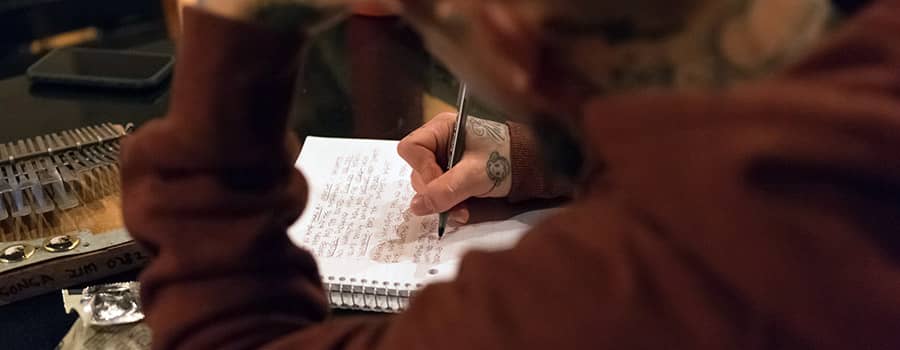The typical income streams available to your average independent artist (royalties, live performance, merch) are not the most reliable and consistent.
So when you come across a business model that pays creators monthly directly from the support of fans, it’s easy to see the allure of a platform like Patreon. It is free to start a page, but does it mean you should invest your time to do it?
According to the data I gathered from Graphtreon in 2020, 72% of creators in the music category on Patreon do not have more than 10 fans supporting their page! If you’re lucky, that can work out to $100 a month, which is definitely not enough to make an impact on your career.
The question then becomes, why are there so many Patreon pages not thriving? A lot of it has to do with the fact that many artists, who are starting on Patreon, just aren’t ready yet. Even well-established musicians don’t come fully prepared to handle the workload.
In this blog, I will go over 6 key factors you should evaluate before deciding on starting a membership for you as an artist. These are based on my own experiences launching and managing 4 Patreon campaigns, one of which is currently ranked in the top 125 pages in the music category.
This information can spare you loads of frustration and save you a lot of time that could be better used in other areas of your career.
1. Following Size
One of the first things you need to consider is the size of your fanbase, whether it’s your social media following, YouTube subscribers or email subscribers. Patreon provides you all tools you need to run a successful membership / subscription business model, but discoverability and promotion is solely on you.
This appears to be the most common factor musicians overlook when starting Patreon. It would explain why a majority of music creators on the platform have less than 10 members.
There’s no real secret to growing on Patreon. You just have to look at it as a numbers game. The more people who are familiar with your work and feel emotionally invested in what you do, the more you can potentially recruit them to become paying members or patrons. After all, it’s going to be very difficult to convince strangers who don’t know you to make an ongoing financial commitment.
You might be asking how large of a following do you need? Based on my research, I would say you would need at least 11,000 on one single platform.
Another observation I noticed was that, on average, the number of patrons a top music creator has for their membership page is 1% of the total number of their largest following on a single platform (Facebook, YouTube, Twitter or Instagram). This is from looking at the top 128 creators with the most patrons in the music category.
That may have been confusing so let me give an example. So let’s say a musician in the top of the music category on Patreon has 50,000 Facebook fans/followers as their largest social media following. They are likely to have 1% of 50,000 or 500 patrons.
Aiming for 100 patrons would be a good start. On average, you would need at least 10,000 social media followers, assuming you do proper promotion.
2. Brand Affinity
Building a fan base isn’t only about exposure and reach, but you also have to consider the depth of your fan relationships. Do you have fans that have a strong emotional connection to your brand? Are you doing or saying anything that resonates with fans on a deeper level outside of music?
Because music is naturally an emotional outlet, people who like your songs are going to have some degree of connection. But you need to keep a pulse on how your listeners resonate with your brand.
Branding is a power tool to develop a strong fan relationship. This is why I emphasize it so much and wrote an eBook on it.
This is something you have to evaluate based on the feedback you’ve received. Do you get a lot of comments or messages from fans that your songs really resonate with them? Do you have super fans that buy and support everything you put out? Do you have fans tattooing your song lyrics?
You’re more likely to get someone to join Patreon when they trust you. After all, paying an artist monthly is a commitment only truly invested fans are willing to make.
3. Community
Even if you don’t have a large fanbase, support from a community can be just as powerful. Do you have a community that can rally behind you? It could be a local community you’re affiliated with or an online community based on a shared interest, lifestyle, hobby, goal or attitude.
To be clear, a fanbase is not automatically considered a community, but you can create a community from a fanbase.
What’s the difference? A fanbase implies a hierarchy where the relationship or line of communication is predominately between the artist and each individual fan. In a community, the connections are more decentralized so fans are all communicating with each other on the same level as you.
Patreon is a great place to build a private online community, but you have to be the one to bring them there. Not every musician has community support. It’s not necessary, but it can help stronger rapport between fans and potentially keep them around longer.
4. Unique Selling Propositions
In order to convert fans into paying members, you need to have unique offers or selling propositions that fans can’t get anywhere else. This can be a lot of different things and not only tantiable offerings. Here are some examples:
Community – A private online space for fans who share a common interest can interact with each other. Aside from Facebook Groups, your typical social media platforms aren’t structured to support a private community environment. Discord is a wonderful tool for this and integrates well with Patreon.
Access – Allowing fans to see a more personal side of you or insight into your creative process. Super fans love behind-the-scenes content.
Exclusivity – Giving fans exclusive content or physical goods that can’t be found anywhere else. This could be a bunch of songs that never made the cut for an album or merch specically made for your patrons only.
Direct financial support – A membership model is the best way to fund your art and the creation of new content directly. Not all fans want “things” so some providing an option for them to support you, where most of it goes to you, can be gratifying.
Having more selling propositions can help create a stronger perception of value that your Patreon offers. However, you need to be able to clearly communicate it in a way that doesn’t confuse people. More importantly, you need to know how to promote it properly.
5. Ability to Promote
If there’s anything I know, its that you need to be consistent and persistent with getting fans to join Patreon. You need a plan and strategy to funnel fans to becoming paid members. Posting about your Patreon a couple times a month isn’t going to cut it.
Do you have enough going on in your career to produce quality content and be creative with how you direct attention to your Patreon? Do you have the time and resources to properly invest into promotion?
If you only have a few thousand fans, you need to be able to reach them. Relying on social media alone is not the most effective way to promote to your fans because algorithms determine who sees your posts. This means you may need a budget for Facebook and Instagram ads to get the word out. Is that an expense you can afford?
Email marketing will fare better, so hopefully you have an email list. Without these resources, you’re severely limiting your ability to grow your Patreon membership.
This ties in with the first point about having a sizable following. You need fans who are familiar with you so you can promote to them!
6. Commitment
The idea of earning a monthly income directly from fans is very attractive, but it comes with a lot of work and patience. You need to be committed to building a membership experience for the long run.
Don’t think that you can cruise once you reach a certain level. Even with over 600 patrons, my client constantly recruits members everyday just to maintain. People will drop off as quickly as they join. You need to invest time in not only growing your patrons, but figuring out how to keep them on.
I realize one of the best ways to keep fans around is to provide a sense of community. In order for that to happen, you need to be present on the platform. If you want to build a community of supporters, you need to engage with fans there until fans begin to interact with each other. The more time you hang out with them, the better.
Do whatever it takes to keep fans interested. After a while, you may have to shake things up and make some changes to tiers to keep things fresh. Get feedback from members and try out new ideas.
This is the type of commitment you need to be ready for if you want to be successful on Patreon.
Conclusion
The best way to be successful on Patreon is to only start if you’re actually ready for it. Doesn’t matter if you just uploaded your first song on SoundCloud or you’ve had a 20-year career as an independent.
Of course, there’s no real harm in trying it out since it’s free to sign up. The only drawback is the opportunity costs. Your time may be better served in another aspect of your career that may be more beneficial for the time being.
If you feel you have what it takes to take the next step with a membership model for your music, check out my Patreon for Musicians eBook. I have over 4 years of experience helping artist manage their Patreon pages and share as much information I can to put you in a better position to succeed.
The post 6 Key Factors to Determine If You’re Ready for Patreon appeared first on D4 Music Marketing.





